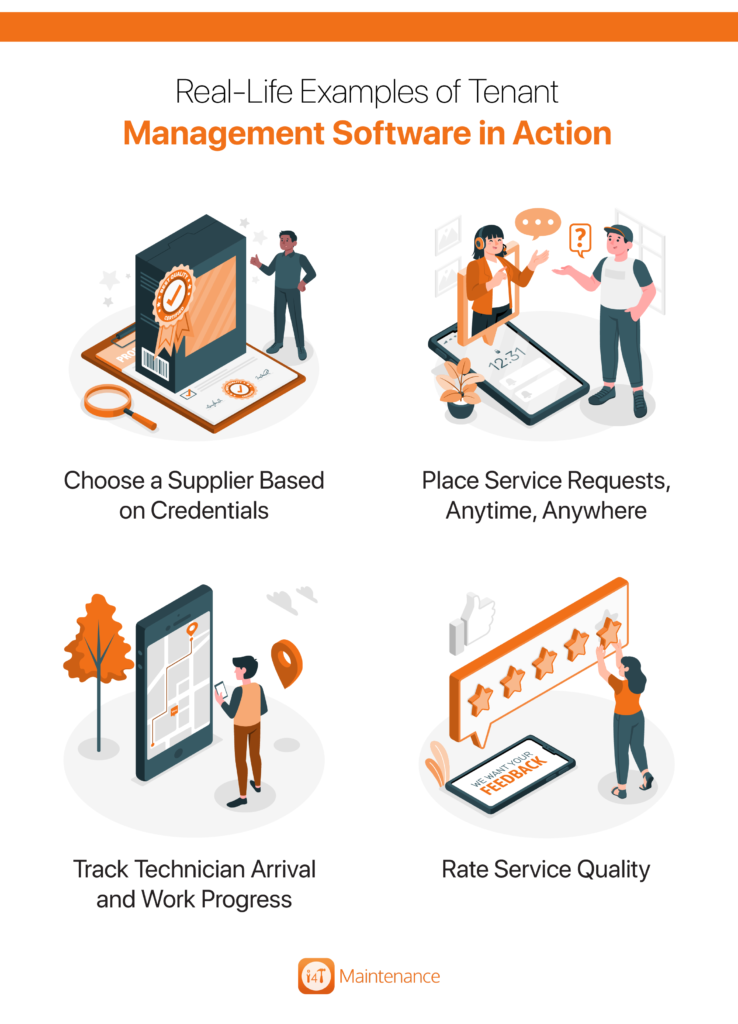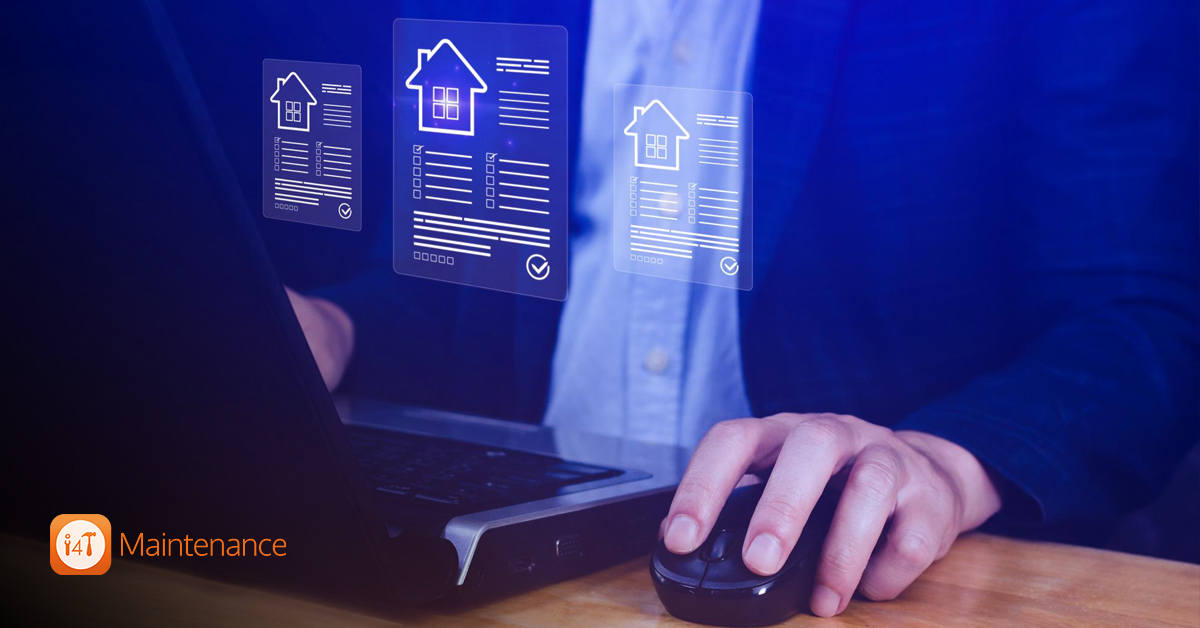Tenant management software is a powerful tool that helps property managers and landlords handle all tenant-related tasks more easily. It simplifies communication, rent collection, maintenance requests, and lease management by putting everything in one place. This makes managing properties smoother and more efficient.
Technology is changing the way property management works. From online rent payments to property maintenance management solutions, new tools are making it easier for landlords and property managers to stay organised and provide better service to tenants. Tenant management software is at the heart of this change, offering solutions that save time and improve tenant satisfaction.
For property managers and landlords, managing tenants effectively is key to success.
Residential property maintenance software can streamline processes leading to happier tenants, fewer vacancies, and better property performance. Whether you’re managing a single building or many properties, tenant management software is an essential tool for making your work easier and more profitable.
What is Tenant Management Software?
Tenant management software is a digital tool that helps property managers and landlords handle tenant-related tasks more easily. It brings everything, like communication, rent collection, maintenance requests, and lease management, into one simple platform.
Instead of using spreadsheets, emails, and paper files, property managers can use the software to manage all their tenant interactions in one place. This makes their work faster, more organised, and less stressful.
Key Functions of Tenant Management Software:
- Tenant Communication: Sends messages and updates to tenants through a single system.
- Rent Collection: Automates reminders, processes payments, and tracks payment history.
- Lease Management: Tracks lease dates, and renewals, and stores lease documents securely.
- Maintenance Requests: Lets tenants submit maintenance issues online and helps property managers schedule and track repairs.
- Financial Reporting: Provides clear reports on income, expenses, and outstanding payments.
Common Features of Tenant Management Software:
- Mobile Access: Works on phones or tablets, so it’s easy to use anywhere.
- Payment Options: Supports various payment methods like credit cards and bank transfers.
- Document Storage: Keeps all important documents in one safe place.
- Tenant Screening: Includes tools to check a tenant’s credit, background, and rental history.
- Notifications: Sends reminders and updates about payments, leases, or maintenance.
By automating and organising these tasks, tenant management software saves time and makes managing properties much easier.
Key Benefits of Using Tenant Management Software
Tenant management software helps property managers and landlords handle their tasks more easily and efficiently while keeping tenants happy.
Here’s how it simplifies property management:
1.Streamlined Communication
Tenant management software makes communication simple. All messages and notifications are in one place, so property managers can stay organised. It lets managers send updates, reminders, and announcements to all tenants at the same time. Features like in-app messaging and automated emails make communication fast and clear, reducing confusion and improving tenant satisfaction.
2.Efficient Rent Collection
Collecting rent becomes easier with tenant management software. It automates rent reminders and tracks payments, so managers don’t have to do it manually. The software supports multiple payment methods like credit cards, bank transfers, and digital wallets, making it convenient for tenants to pay on time. It also automatically applies late fees when needed, ensuring consistent cash flow without awkward conversations.
3.Simplified Maintenance Management
Handling maintenance requests is quick and organised with tenant management software. Tenants can submit requests online, and managers can track and prioritise them. Repairs can be scheduled, and progress is monitored in real-time. This ensures requests are handled quickly, improving tenant satisfaction and keeping properties in good shape.
4.Lease Management and Document Storage
Managing leases is straightforward with tenant management software. It keeps track of lease start and end dates, handles renewals, and manages terminations. The software also securely stores important documents like lease agreements and inspection reports, making them easy to access when needed. This saves time and keeps everything organised.
5.Enhanced Tenant Screening
Finding good tenants is easier with built-in screening tools. The software checks credit scores, rental histories, and backgrounds, helping property managers choose reliable tenants. This reduces the risk of late payments, property damage, and tenant turnover, leading to smoother operations.
6.Financial Tracking and Reporting
Tenant management software provides financial tools that make tracking income and expenses simple. It offers clear dashboards and generates reports that show rent collection, maintenance costs, and overall property performance. This helps property managers make informed decisions and stay on top of their finances.
7.Improved Compliance and Record-Keeping
Staying compliant with property laws is easier with tenant management software. It keeps all legal documents, lease agreements, and inspection records organised and up to date. Automated reminders for inspections, lease renewals, or compliance deadlines help managers avoid penalties and stay on track.
8.Increased Operational Efficiency
The software automates routine tasks like sending rent reminders, tracking payments, and managing maintenance requests. This saves time and reduces errors, allowing property managers to focus on more important work, like growing their business. Automation also simplifies workflows, boosting productivity and making property management smoother.
Tenant management software is an essential tool for property managers looking to improve efficiency and property performance.
Real-Life Examples of Tenant Management Software in Action

Residential property maintenance software, i4T Maintenance, offers a white-labelled tenant app that is a great example of how tenant management software can improve property management and enhance tenant satisfaction.
This app simplifies the maintenance process, making it easy and transparent for both tenants and property managers.
Here’s how the i4T Maintenance app helps tenants:
- Choose a Supplier Based on Credentials: Tenants can view service providers’ qualifications, reviews, and ratings before selecting one. This helps them feel confident that the supplier is reliable and capable of solving their issue.
- Place Service Requests, Anytime, Anywhere: Tenants can quickly report maintenance issues through the app, ensuring their requests are logged and addressed without delay.
- Track Technician Arrival and Work Progress: The app allows tenants to see when the technician will arrive and monitor the status of the repair work in real-time. This keeps them informed and reduces frustration.
- Rate Service Quality: After the repair is completed, tenants can rate the service and provide feedback. This helps property managers ensure high standards and improve services over time.
By making the maintenance process easy and efficient, the i4T Maintenance tenant app builds trust and satisfaction among tenants. It reduces waiting times, improves communication, and ensures tenants feel their concerns are heard. This is a great example of how tenant management software can create a better experience for everyone involved.
Choosing the Right Tenant Management Software
Finding the right tenant management software is key to simplifying your property management tasks and meeting your unique needs. Here are some tips and features to consider to ensure you choose the best option:
Tips for Selecting the Right Software
- Understand Your Needs:
Think about the size of your property portfolio and the challenges you face.
For smaller properties, look for basic features like rent collection and lease tracking.
Larger portfolios may need advanced tools like maintenance tracking, financial reporting, and tenant screening. - Set a Budget:
Decide how much you’re willing to spend on software.
Compare pricing plans to find one that fits your budget while offering the features you need.
Look for software with flexible pricing that can grow with your business. - Focus on Key Features:
Make a list of must-have features, such as communication tools, payment processing, or maintenance management.
Ensure the software covers your top priorities without unnecessary extras. - Try Before You Commit:
Many providers offer free trials or demos. Use these to explore the software and see if it fits your workflow.
Involve your team to ensure the platform is easy to use and meets everyone’s needs. - Check Reviews and Recommendations:
Look at customer reviews and success stories to see how the software works in real-world situations.
Pay attention to feedback from property managers with similar needs to yours.
Important Features to Look For
- Mobile Accessibility: The software should work on mobile devices or have a dedicated app. This ensures you and your tenants can access it anytime, anywhere.
- Integration Options: Choose software that connects with tools you already use, like accounting systems, payment gateways, or customer management tools. Integration saves time and keeps your processes connected.
- Reliable Customer Support: Look for software with strong customer support, including live chat, email, or phone options. Good support ensures quick help when you need it.
- Scalability: Select software that can grow with your needs, whether you manage a few properties now or plan to expand.
- Security and Compliance: The software should protect tenant and financial data with strong security measures. Look for features that help you stay compliant with property laws and regulations.
- Easy to Use: A simple and user-friendly interface is essential for quick adoption by your team and tenants.
Over to You
Tenant management software provides huge benefits for property managers and landlords by simplifying tasks like communication, rent collection, maintenance tracking, and lease management. These tools help streamline operations, improve tenant satisfaction, and keep everything organised and efficient.
One great example is i4T Maintenance, a complete solution for property managers. It allows you to manage work order requests, suppliers, and tenants all from one platform.
Tenants can easily submit service requests, property managers can assign tasks to suppliers, and the progress of each task can be tracked in real-time. This system makes communication easier, speeds up issue resolution, and improves overall efficiency.
Using a property maintenance management solution like i4T Maintenance saves time, reduces mistakes, and boosts productivity. It’s designed to handle every part of tenant service request and property maintenance management, helping you focus on growing your business while keeping tenants and suppliers happy.
Now is the perfect time to invest in tenant management software like i4T Maintenance and see how it can transform the way you manage properties. Book a demo today!
Tenant management software is a tool that helps landlords and property managers handle tasks like communication, rent collection, maintenance requests, and lease management in one platform.
It centralises all messages and notifications, allowing property managers to send updates, reminders, and announcements to tenants quickly and efficiently.
What features should I look for in tenant management software?
i4T Maintenance helps property managers handle work orders, suppliers, and tenants in one system, making maintenance and communication fast and efficient.
Yes, tenant management software can be scaled to fit properties of all sizes, offering basic features for small portfolios and advanced tools for larger ones.

